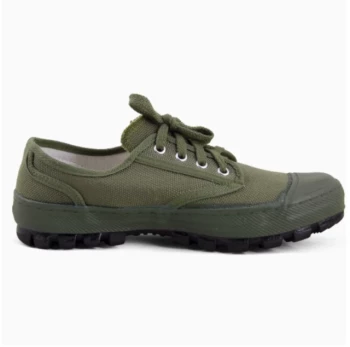Research shows that over three-quarters of lower extremity injuries stem from improper footwear selection. Strategic shoe design doesn't just cushion your steps—it actively disrupts injury cycles through biomechanical interventions. Let's examine how engineered features combat specific pathologies.
The Science of Footwear Protection
Plantar Fasciitis Defense: Arch Support Dynamics
Plantar fascia inflammation occurs when the foot's natural arch collapses excessively during weight-bearing. Quality walking shoes counteract this through:
- Contoured Arch Bridges: Midsole structures that replicate the foot's medial longitudinal arch, reducing strain on the plantar fascia by up to 30% compared to flat insoles
- Roll Bars: Semi-rigid thermoplastic units embedded beneath the arch that limit overpronation (excessive inward rolling)
- Progressive Compression: Multi-density midsoles that stiffen gradually from heel to arch, preventing sudden stretching of the fascia
A 2023 gait analysis study found shoes combining these features reduced plantar loading forces by nearly half during the push-off phase.
Achilles Relief Engineering: Heel-to-Toe Transition
Achilles tendinitis often develops from abrupt tension changes during heel strikes. Modern walking shoes employ:
- Rocker Soles: Curved outsoles that smooth the transition from impact to toe-off, decreasing peak tendon strain by approximately 20%
- Gradual Heel Drops: 6-10mm heel-to-forefoot height differentials that maintain optimal calf muscle tension
- Impact Channels: Heel grooves that absorb vertical forces before they travel up the kinetic chain
These technologies work synergistically—the rocker sole's smooth roll-over complements the heel drop's tension management, creating what biomechanists call "protective kinematics."
Beyond the Basics: Lesser-Known Injury Prevention
While arch and heel systems receive most attention, these subtle features prevent secondary injuries:
-
Metatarsal Pads
- Positioned behind the ball of the foot to redistribute pressure from vulnerable forefoot bones
- Shown to reduce stress fracture risks in long-distance walkers
-
Flex Grooves
- Strategic outsole flex points that match natural foot bending patterns
- Prevent compensatory movements that lead to peroneal tendonitis
-
Ankle Collar Geometry
- Asymmetrical padding that stabilizes without restricting
- Reduces lateral ankle sprain incidence by supporting subtalar joint motion
Footwear Selection Biomechanics Checklist
When evaluating walking shoes for injury prevention, verify these biomechanical markers:
✅ Arch Support Type
- Medium-density for neutral arches
- Firmer support for flexible arches
✅ Heel Counter Rigidity
- Should resist 50-70% compression when squeezed
✅ Torsional Stability
- The shoe shouldn't twist easily along the longitudinal axis
✅ Weight Distribution
- 60% of weight should naturally shift to the forefoot during gait
✅ Flex Point Alignment
- Bend should occur at the metatarsophalangeal joints, not midfoot
3515 Footwear Solutions manufactures biomechanically validated walking shoes incorporating these principles. Our OEM/ODM services help distributors and brands deliver clinically protective footwear at scale—because every step should advance health, not compromise it.
Ready to develop walking shoes that scientifically prevent injuries? Partner with 3515 to engineer biomechanical solutions into your product line.
Related Products
- Wholesale Durable Camo Canvas Shoes with High-Traction Rubber Soles
- Durable High-Traction Canvas Sneakers Wholesale & Custom Manufacturing
- Durable Rubber Sole Outdoor Shoes Wholesale & Custom Manufacturing
- Durable Canvas Work Shoes with Rubber Lug Sole | Wholesale Manufacturer
- Wholesale Smart Casual Sneakers with Dial Closure | Factory Direct Manufacturing
Related Articles
- How Tactical Footwear Technologies Ensure Mission-Critical Reliability
- How to Choose Tactical Footwear That Matches Your Public Safety Role
- How Tactical Footwear Innovations Are Redefining Safety and Performance
- How Tactical Footwear Combines Certified Safety and Ergonomic Design for Transport Workers
- How Tactical Footwear Shields Delivery Workers from Job-Specific Injuries



















